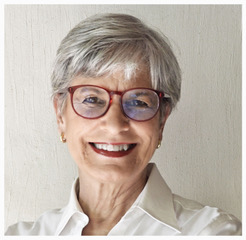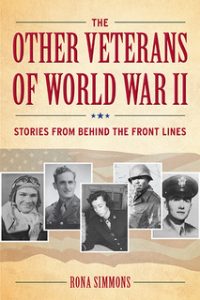Writing about War for (Men and) Women
 Writing about War for (Men and) Women
Writing about War for (Men and) Women
A few years ago, I explored the science behind what makes a book a woman’s book or a man’s book, if in fact there is such a distinction. “Of course, there is,” most writers and readers would say, without a moment’s hesitation—that is, most writers and readers not concerned about politically correct views on gender.
What Women Read
According to my research, women favor books classified as “women’s fiction,” mystery, and thrillers (including true crime) while men surpass women in reading nonfiction, whether history, political treatises, current events, or business texts. When women turn to nonfiction, they read self-help books by a greater degree than men. The rationale is (according to experts and speculation on the part of a small group of my fellow female authors) women are more empathetic and thus prefer books where strong emotional elements are present, works that often contain relationship and family issues. Thus, they gravitate to character-driven stories while men seek action, adventure, and history, or plot-driven stories.
What’s a Woman (Writer) to Do?
As a writer whose goal is to appeal to a broad audience, I also learned that women out-read men and that women are responsible for eighty percent of books purchased. So, deciding to write nonfiction about World War II should have given me pause. It didn’t.
In my early teens, I devoured history books, a penchant that would later convince me to write about history. My father had served in WWII, but it would be decades before I convinced him to talk about the war. Then, in the 1990s, what started as a casual conversation morphed into a several week long interview and my capturing his recollections in a book.
In 2011 I wrote two works of historical fiction set in early 20th century, stories of ordinary people and their lives and loves. The books no doubt found a better reading reception among women. Little did I realize at the time, the books—steeped in details of two world wars—would lead me to write nonfiction about the era.
Shortly afterward, I befriended another WWII veteran, Jack Smith. Ninety-plus year old Jack is a storyteller and an artist. Within minutes of our meeting we collaborated on a means to preserve his story and his paintings of iconic scenes from the war. The result was Images from World War II: The Art of Jack Smith.
By then, the ball was rolling. Along the way, I met Jonathan Jordan (American Warlords) and Winston Groom (The Allies) both of whom were encouraging and immensely helpful in guiding my efforts. Then, in 2016, another chance meeting—this time with a daughter of a WWII veteran—led me to the first of what would prove to be 19 stories for a book with a fresh perspective on the war, that of noncombat veterans. Over the ensuing 18 months, I interviewed living WWII veterans or their sons and daughters, most of whom had never told their remarkable stories.
Research
With a lapse of seventy-five years from the end of the war and the naturally faulty memories of my subjects, I relied on research to validate facts and create context. Thankfully, I am a natural-born researcher, if there is such a thing.
I am also fortunate that so much has been written about the war. Although the sheer amount of information was daunting, it made my work much easier. My favorite part was discovering fascinating details rarely mentioned in popular books on the war. Weaving these morsels into my book’s narrative, brought the stories to life.
Writing for a Broader Audience
From my research on men and women’s reading habits, I expected The Other Veterans of World War II: Stories from Behind the Front Lines would appeal largely to male readers. So, I took steps to broaden the audience.
The first was to ensure that the stories were fully formed, revealing the protagonist (to borrow a term from fiction) as a complete person. Although each of the book’s stories focus on a veteran’s service in the war, they begin at the beginning—where the veteran was born and how their early life influenced them to serve their country and when their job was done to return home and carry on with their lives. The veterans share their perspectives from a distance of many decades, reflecting on the war and giving the reader insight into their emotional makeup.
The second was to transform the 19 tales from a collection of stories to create a blend of character-driven and plot-driven aspects. This I accomplished by wrapping the stories in the sweep of global events of the 1940s and sequencing the stories so that readers follow the veterans from enlisting to arriving in their respective theaters of operation, to performing their duties at or near the battlefield, and ten as they return home. They follow the veterans and watch them transform from often naïve and brash eighteen- and twenty-year-olds to men and women wise beyond their years.
My hope is readers across the spectrum will find something that speaks to them, whether of the panorama of history that has so informed our lives today, or the small glimpses of sacrifice and duty. If men are from Mars and women from Venus, they are both also from Earth somewhere in the middle with a history that provides a common ground for reading.
****
Rona Simmons has written both novels and works of nonfiction. The daughter of a World War II fighter pilot herself, she is proud to honor veterans and their stories through her work. In 2016, she coauthored Images from World War II, celebrating the art of WWII veteran and artist Jack Smith. She is delighted to share her new book, The Other Veterans of World War II: Stories from Behind the Front Lines, with its timely release by the Kent State University Press in April 2020 for the 75th anniversary of the end of WWII.
Follow her on Twitter https://twitter.com/rona_simmons
Find out more about her on her website https://ronasimmons.com
—
The Other Veterans of World War II: Stories from Behind the Front Lines
 The book illuminates a little-understood and often ignored side of World War II—that of noncombat soldiers. These men and women served in all branches of the military often miles from the front lines in Europe, North Africa and the Pacific, but like their combat brothers, they have remarkable stories to tell.
The book illuminates a little-understood and often ignored side of World War II—that of noncombat soldiers. These men and women served in all branches of the military often miles from the front lines in Europe, North Africa and the Pacific, but like their combat brothers, they have remarkable stories to tell.
Simmons gives us the war in a nutshell, packed with details of the enormity of the global operation. The facts, figures, and asides gathered during the author’s extensive research complete the picture of these human-sized stories replete with the veterans’ sacrifices, their faith and their humor.
The book is available wherever books are sold and here
Category: On Writing






























